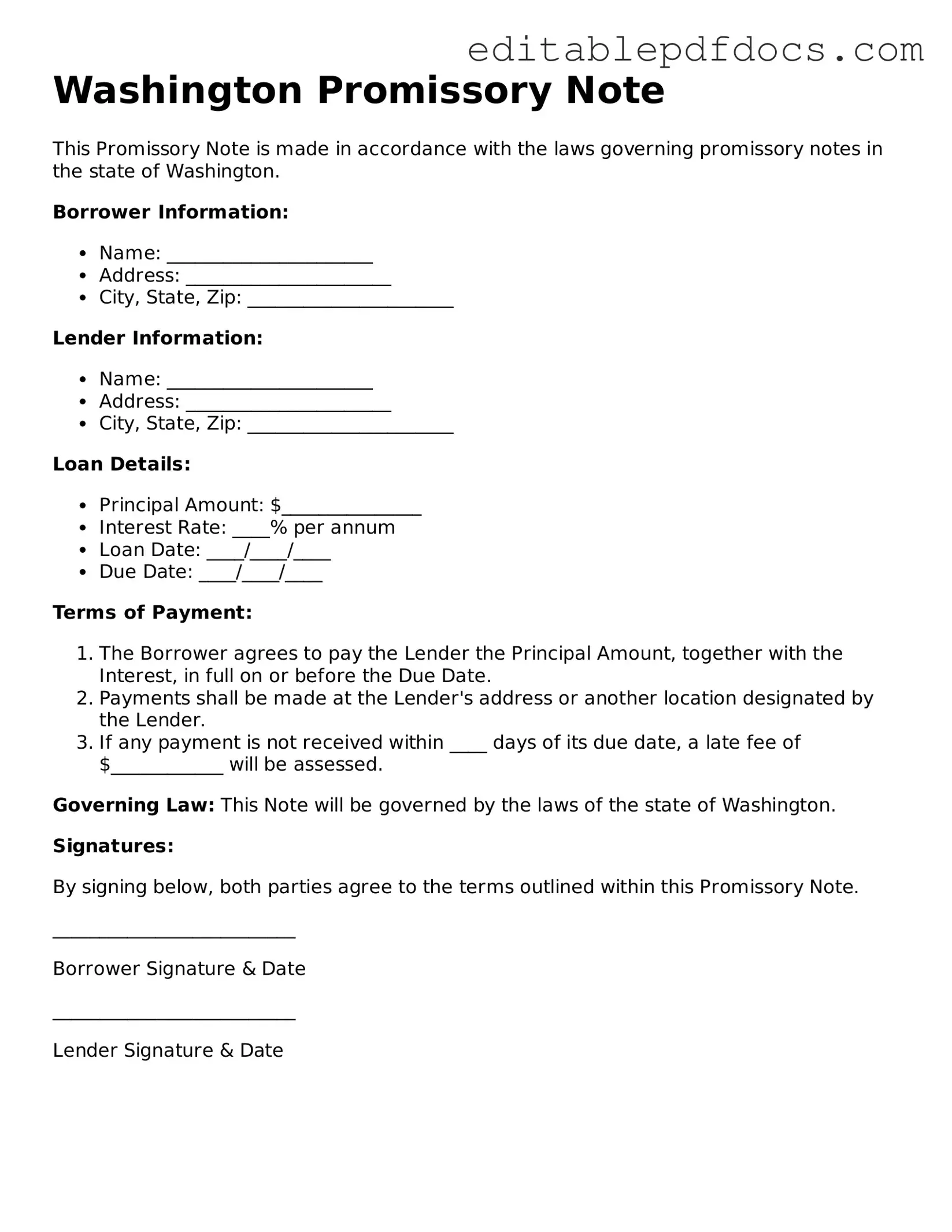Filling out the Washington Promissory Note form requires attention to detail. One common mistake is failing to include the correct names of the parties involved. Both the borrower and lender must be clearly identified. Omitting or misspelling names can lead to complications in enforcing the note.
Another frequent error is neglecting to specify the loan amount. The amount should be written both numerically and in words to avoid any ambiguity. If the two figures do not match, it may result in disputes over the actual amount owed.
Many individuals also overlook the importance of including the interest rate. The form should clearly state whether the loan is interest-bearing and, if so, what the rate is. Without this information, the terms of repayment can become unclear, leading to misunderstandings later on.
People often fail to indicate the repayment schedule. It is essential to detail when payments are due and how they should be made. A lack of clarity in this section can create confusion and may result in missed payments.
Another mistake involves not signing the document. Both parties must sign the Promissory Note for it to be legally binding. Failing to obtain signatures can render the note unenforceable, which may lead to further complications.
Some individuals forget to date the document. The date is crucial as it establishes when the agreement was made. Without a date, it can be difficult to determine the timeline for repayment and any applicable interest.
People sometimes ignore the need for witnesses or notarization. Depending on the circumstances, having a witness or notarizing the document may be necessary for legal validity. Skipping this step can jeopardize the enforceability of the note.
Lastly, individuals may not keep a copy of the completed Promissory Note. Retaining a copy is vital for both parties to refer to in case of disputes. Without a copy, one party may have difficulty proving the terms of the agreement.
